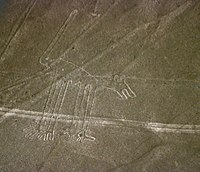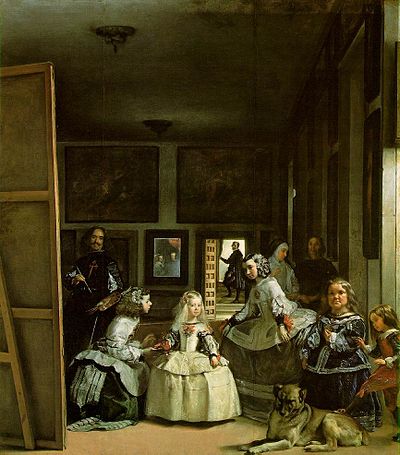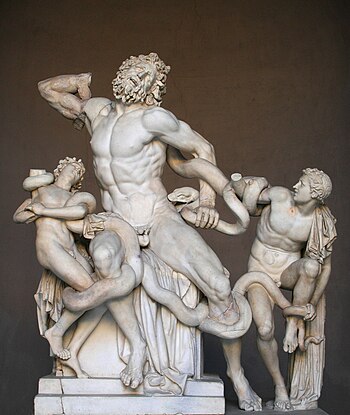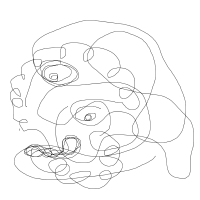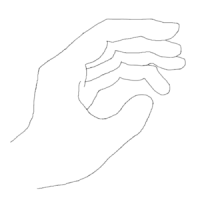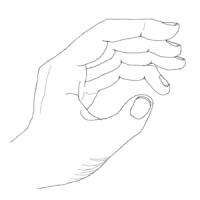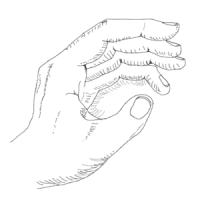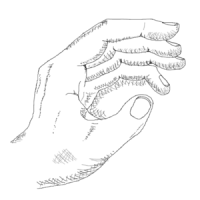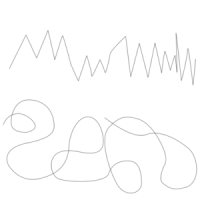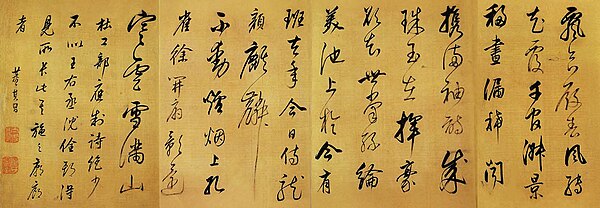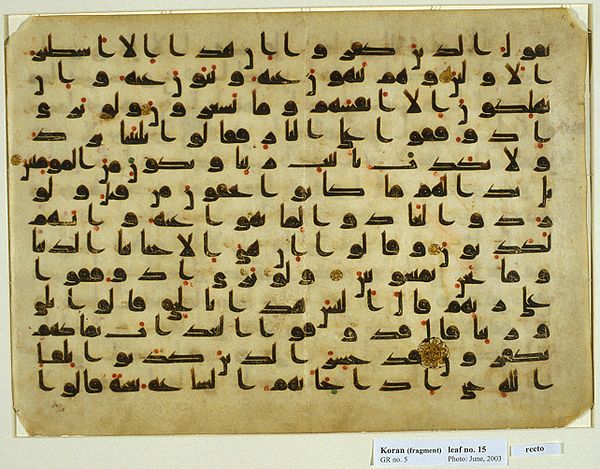The element of the line
| Art Appreciation and Techniques (#ART100) | |
|---|---|
| The visual language: Artistic elements | Overview | Introduction | Point | Line | Shape | Mass | Space | Value or tone | Color | Texture | Summary |
The Nazca lines in the arid coastal plains of Peru date to nearly 500 BCE were scratched into the rocky soil, depicting animals on an incredible scale, so large that they are best viewed from the air. Let’s look at how the different kinds of line are made.
Diego Velazquez’s Las Meninas from 1656, ostensibly a portrait of the Infanta Margarita, the daughter of King Philip IV and Queen Mariana of Spain, offers a sumptuous amount of artistic genius; its sheer size (almost ten feet square), painterly style of naturalism, lighting effects and the enigmatic figures placed throughout the canvas –including the artist himself – is one of the great paintings in western art history. Let’s examine it to uncover how Velazquez uses basic elements and principles of art to achieve such a masterpiece.Types of Lines
Actual lines are those that are physically present. The edge of the wooden stretcher bar at the left of Las Meninas is an actual line, as are the picture frames in the background, and the linear decorative elements on some of the figures' dresses. How many other actual lines can you find in the painting?
Implied lines are those created by visually connecting two or more areas together. The space between the Infanta Margarita – the blonde central figure in the composition – and the ‘meninas’, or maids of honor, to the left and right of her, are implied lines. Both set up a diagonal relationship that implies movement. By visually connecting the space between the heads of all the figures in the painting we have a sense of jagged motion that keeps the lower part of the composition in motion, balanced against the darker, more static upper areas of the painting. Implied lines can also be created when two areas of different colors or tones come together. Can you identify more implied lines in the painting? Where? Implied lines are found in three-dimensional artworks too. In the sculpture Laocoön Group, Laocoön, a figure from Greek and Roman mythology, is, along with his sons, being strangled by sea snakes sent by the goddess Athena as wrath against his warnings to the Trojans not to accept the Trojan horse. The sculpture sets implied lines in motion as the figures writhe in agony against the snakes.
Expressive or organic lines are curved, adding an organic, more dynamic character to a work of art. Expressive lines are often rounded and follow undetermined paths. In Las Meninas you can see them in the aprons on the girls’ dresses and in the dog’s folded hind leg and coat pattern. Look again at the Laocoön to see expressive lines in the figures’ flailing limbs and the sinuous form of the snakes. Indeed, the sculpture seems to be made up of nothing but expressive lines, shapes and forms.
There are other kinds of line that encompass the characteristics of those above yet, taken together, help create additional artistic elements and richer, more varied compositions. Refer to the images and examples below to become familiar with these types of line:
| Outline, or contour line is the simplest of these. They create a path around the edge of a shape. In fact, outlines define shapes. | Cross contour lines follow paths across a shape to delineate differences in surface features. They give flat shapes a sense of form (the illusion of three dimensions), and can also be used to create shading. |
| Hatch lines are repeated at short intervals in generally one direction. They give shading and visual texture to the surface of an object. | Cross-hatch lines provide additional tone and texture. They can be oriented in any direction. Multiple layers of cross-hatch lines can give rich and varied shading to objects by manipulating the pressure of the drawing tool to create a large range of values. |
Although line as a visual element generally plays a supporting role in visual art, there are wonderful examples in which line carries a strong cultural significance as the primary subject matter.
Consider this more geometric example from the Koran, created in the Arabic calligraphic style.
Both these examples show how artists use line as both a form of writing and a visual art form. American artist Mark Tobey (1890-1976) was influenced by Oriental calligraphy, adapting its form to the act of pure painting within a modern abstract style described as "white writing."

